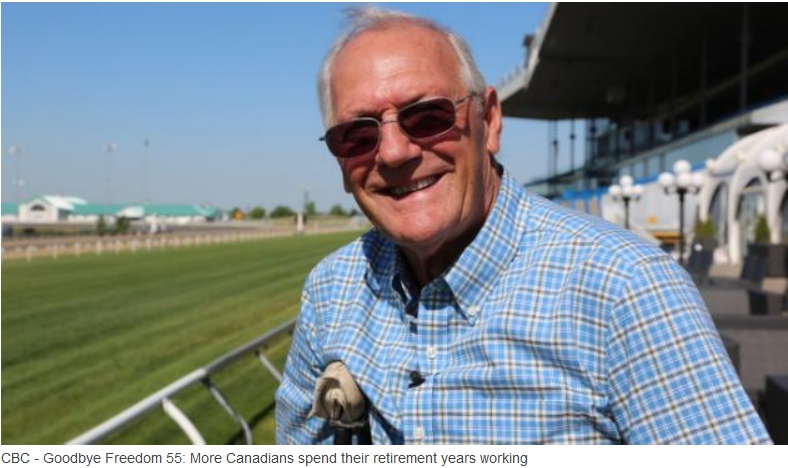At 76, thoroughbred horse trainer Roger Attfield has no interest in retiring.
“There’s an old saying that racehorse trainers don’t retire, they just die,” said Attfield with a laugh.
For almost five decades, Attfield has been starting his day at 5:30 a.m., often working seven days a week training horses at Toronto’s Woodbine Racetrack. In the winter he heads to a track in Florida.
His dedication and passion for his job have earned him eight Queen’s Plate wins and a place in the Canadian Horse Racing Hall of Fame.
After building a successful career, he finds the idea of giving it all up for retirement unimaginable, especially because he’s still active and healthy — aside from hobbling around on crutches with a broken foot after being stepped on by a horse recently.
“If I wasn’t working I don’t know what I’d do,” said Attfield. “The thought of just sitting around doing nothing — I wouldn’t exist. I mean, this is driving me crazy and when I first had it they said, ‘You know you gotta lay down and keep your foot up.’ Crikey, I’d go mad.”
Attfield is among a rapidly growing number of Canadians who are defying the traditional age of retirement.
Statistics Canada says the average age of retirement climbed from 61 in 2005 to 63 in 2015.
The latest data shows the number of senior citizens still working has skyrocketed by 62 per cent in the past decade. Almost one out of every eight people over 65 still works. A decade ago, that ratio was less than one in 13.
For Attfield, it’s the love for the job rather than the money that keeps him working. But he admits that if he wasn’t getting a paycheque he’d have to watch his savings.
“When you’re self employed, as you know, we don’t have any pension plans or any benefits or anything like that. So you’ve got to have saved it and savings don’t go too far nowadays, do they, if you’re not working,” said Attfield.
“If somebody could tell me when I was going to die I could tell you whether I needed to work or not,” he chuckled.
A report this year by the Broadbent Institute found that only 15 to 20 per cent of middle-income Canadians retiring without an employer pension have saved anywhere near enough for retirement.
Winnipegger Terri Tysowski knows what it feels like to have no choice but to work in her retirement years.
“I would say today realistically it’s Freedom 66 or 70,” acknowledges Tysowski. At 69 she is working three part-time jobs to pay the bills.
“I purchased a car, so I have car payments now. We need to pay our mortgage. We still have a bit owing there. You’ve got your utilities, everybody has. The insurances on the vehicle, on the home. There isn’t a day that you don’t go to that mailbox and there’s a bill to be paid.”
For 35 years Tysowski had a career in banking, but her job became redundant. She started her own business selling health and wellness products and in 2013, at 66, she transitioned to a brand new career working for a recruitment company.
Working later in life means she can maintain her independence and not have to worry about money.
“I have friends who are there and they’re telling me if I can keep working, if I am healthy and I’ve got the energy, keep going because they’re really struggling being on that budget.”
For those who have retired and then realized they’re financially short and need to get back into the workplace, there is help.
Lisa Taylor, founder and president of Challenge Factory, launched a business that provides mentoring for the older generation in a career change.
She also works with companies to challenge their outdated thinking about older workers.
“Organizations count people out too early,” said Taylor. “Training stops when people are in their late 40s, early 50s because people think they’re getting ready to move on to that next segment of life. That’s not actually what people are doing.”
That expectation of retirement, according to Taylor, makes it harder to get hired after 50. But she has noticed a shift in that outdated thinking, with more employers slowly starting to realize the benefits of an aging workforce.
“It’s actually a great thing for business. There is a whole workforce to capitalize on from the older generation and to realize there are extra decades of productivity,” said Taylor.
Read the full post in Yahoo Finance Canada










